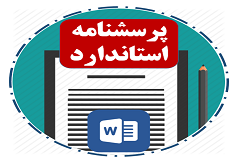Table of Contents
Contents Page
ACKNOWLEGMENTS………………………………………………………………………………. I
ABSTRACT ……………………………………………………………………………………………… II
TABLE OF CONTENTS……………………………………………………………………………. III
LIST OF TABLES……………………………………………………………………………………… V
LIST OF FIGURES…………………………………………………………………………………… VI
CHAPTER ONE: PRELIMINARIEE
1.1 Introduction……………………………………………………………………………………… 1
1.2 Statement of the Problem……………………………………………………………………. 5
1.3 Significance of the Study……………………………………………………………………. 6
1.4 Research Questions …………………………………………………………………………… 7
1.5. Definition of Key Terms…………………………………………………7
1.6. Organization of the thesis……………………………………………….9
CHAPTER TWO: LITERATURE REVIEW
2.1 Introduction…………………………………………………………………………………….. 11
2.2 Teaching and Learning English …………………………………………………………. 11
2.3 The Need for Teacher Training…………………………………………………………… 12
2.4. Teacher Training Programs Scrutinized…………………………………………………… 14
2.5. Models of Teacher Training…………………………………………………………………… 14
2.5.1 Wallace’s Models……………………………………………………….14
2.5.1.1 The craft model……………………………………………………………………….. 15
2.5.1.2 The applied science model………………………………………………………… 15
2.5.1.3. The reflective model………………………………………………16
I |
2.5.2. Day’s Model…………………………………………………………….17
Contents Page
2.5.2.1. The Apprentice – Expert Model……………………………………17
2.5.2.2. The Rationalist Model………………………………………………17
2.5.2.3. The Case Studies Model……………………………………………17
2.5.2.4. The Integrative Model………………………………………………17
2.5.3. Bramley’s Model………………………………………………………….18
2.6. Evaluating Educational Programs…………………………………………….18
2.6.1. Ornstein and Hunkins’ Model…………………………………………….21
-
Provus’s Discrepancy Evaluation Model…………………………..21
-
Stake’s Congruence – Contingency Model…………………………22
-
Stufflebeam’s Context, Input, Process, Product Model (CIPP)…….23
-
Judicial Approach to Evaluation……………………………………24
-
Eisner’s Connoisseurship Evaluation Model……………………….24
-
Illuminative Evaluation Model…………………………………….25
-
Portraiture Model…………………………………………………..25
2.7 Evaluating Teacher Training Programs……………………………………26
2.7.1 Hamblin’s Model……………………………………………………..28
2.7.2 Brinkerhoff’s Six-Stage Evaluation Model…………………………..29
2.7.3 Kirkpatrick’s Model………………………………………………….29
2.7.4 Woodward’s Model…………………………………………………..30
2.7.4.1 The evaluation of trainees: the objectives model………………30
2.7.4.2 The evaluation of trainees: the process model…………………30
2.7.4.3 The evaluation by trainees………………………………………31
2.8 Experimental Studies on In-service Training Programs………………….31
2.9 The Summary……………………………………………………………..35
CHAPTER THREE: METHOD
3.1 Introduction………………………………………………………..………37
3.2 Design of the Study…………………………………………………………37
II |
3.3 Sample………………………………………………………………….…38
Contents Page
3.3.1 Sampling procedure……………………………………………………………………. 38
3.3.2 Participants……………………………………………………………………………….. 39
3.4 Instrumentation ……………………………………………………………………………….. 39
3.4.1 Teachers’ semi-structured Interviews………………………………..40
3.4.2 In-Service Teacher Training Programs Questionnaire………………..41
3.4.2.1 Development of the Questionnaire……………………………..41
3.5 Data Collection Procedure ………………………………………………………………… 41
3.6 Data Analysis Procedure …………………………………………………………………… 42
CHAPTER FOUR: RESULT AND DISCUSSION
4.1 Introduction…………………………………………………………………………………….. 43
4.2 Findings…………………………………………………………………..43
4.2.1 Findings of the Qualitative Data Collection (teachers’ interviews)…….43
4.2.1.1 Codification of the Data…………………………………………….44
4.2.1.1.1 Open Coding……………………………………………………44
4.2.1.1.2 Axial Coding……………………………………………………47
4.2.1.1.3 Selective Coding………………………………………………..48
4.2.2. Development of the ISTTPQ……………………………………………49
4.2.2.1 Development of the Questionnaire Items …………………………50
4.2.2.2 Content and Face Validity……………………………….………..50
4.2.2.3 Pilot Study…………………………………………………………51
4.2.2.4 Reliability………………………………………………………….52
4.2.2.5 Construct Validity…………………………………………………54
4.2.2.5.1 Factor Analysis…………………………………………………..54
4.2.2.6 Reassessment of Internal Consistency of the Questionnaire………60
4.2.3 Findings of the Quantitative Data Collection (Questionnaire)…………60
4.2.3.1 Demographic information of the participants……………………..60
4.2.3.2 Descriptive analysis of the data……………………………61
4.3 Teacher Development Program…………………………….……..67
III |
Contents Page
4.3.1 Needs Analysis………………………………………………………….67
4.3.2 Planning…………………………………………………………………67
4.3.3 The Content of the In-service Program………………………………..68
4.3.4 The Process of the In-service Training Program……………………….69
4.3.5 Evaluation of the In-Service Training Program……………………….69
4.4 Discussion………………………………………………………………………69
CHAPTER FIVE: SUMMARY, CONCLUSION, AND IMPLICATIONS
5.1 Introduction…………………………………………………………………………………….. 74
5.2 Summary ………………………………………………………………………………………… 74
5.3 Conclusion ………………………………………………………………………………………. 74
5.4 Pedagogical Implications ………………………………………………………………….. 75
5.5 Limitations of the Study …………………………………………………………………… 75
5.6 Suggestions for Further Research ………………………………………………………. 76
REFERENCES………………………………………………………………………………………… 77
APPENDICES…………………………………………………………………………………………. 86
IV |
List of Tables
Contents Page
Table 2.1 Provus’s Discrepancy Evaluation Model………………………………….21
Table 3.1 Demographic Information of the participants…………………………………….. 39
Table 4.1 Item-total Statistics………………………………………………………..53
Table 4.2 Item-total Statistics………………………………………………………..53
Table 4.3 Reliability Analysis of the ISTTPQ……………………………………….54
Table 4.4 KMO and Bartlett’s Test………………………………………………….55
Table 4.5 Total Variance Explained for ISTTPQ……………………………………55
Table 4.6 Rotated Component Matrix of the ISTTPQ……………………………….56
Table 4.7 The Summary Table of Items Belonging to Each Factor………………….59
Table 4.8 Reliability Analysis of ISTTPQ…………………………………………..60
Table 4.9 Percentage, Mean, and Sig. in Factor 1of the analysis……………………..61
Table 4.10 Percentage, Mean, and Sig. in Factor 2 of the analysis……………………..63
Table 4.11 Percentage, Mean, and Sig. in Factor 3 of the analysis………………………64
Table 4.12 Percentage, Mean, and Sig. in Factor 4 of the analysis………………….65
Table 4.13 Percentage, Mean, and Sig. in Factor 5 of the analysis………………………. 65
Table 4.14 Percentage, Mean, and Sig. in Factor 6 of the analysis………………….66
Table 4.15 Percentage, Mean, and Sig. in Factor 7 of the analysis………………….66
V |



